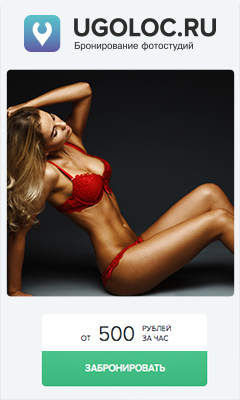|
CONTENTS:
Red Square is the most famous city square in Moscow, and arguably one of the most famous in the world. The square separates the Kremlin, the former royal citadel and currently the official residence of the President of Russia, from a historic merchant quarter known as Kitai-gorod. As major streets of Moscow radiate from here in all directions, being promoted to major highways outside the city, Red Square is often considered the central square of Moscow and of all Russia. More→
Monument to Yuriy Dolgorukiy – legendary founder of the city – for the time of every New Year celebration is dressed up as Father Frost – Russian analogue of Santa Klaus.
Moscow City Hall
First Tverskaya-Yamskaya Street
Arbat Street
Old Arbat street. Painted by Alyona Dergilyova. The inscription “ðþìî÷íàÿ” means a “wine-glassary”, i.e. a fast-drink bar. Visiting a ryumochnaya, you can drink a wine-glass (ðþìêà [ryumka] in Russian, hence the world “ryumochnaya”) of Russian Vodka or cheap but strip Port without any snack. To have a snack you should remove to a zakusochnaya (çàêóñî÷íàÿ) or “snackary”.
This ryumochnaya "Ãîãîëü"
is named after the Great Russian writer, novelist, humorist, and
dramatist Nikolai V. Gogol, who leaved and dead in Moscow just near the
Arbat Street. The Russians believe, Gogol liked to visit this
ryumochnaya several times a day, scooping inspiration with wine-glasses.
The monuments of Stalin's epocha still remain in Moscow. Painted by Alyona Dergilyova.
Feral dogs in the street. Painted by Alyona Dergilyova. There is about a million feral dogs in Moscow. Before the XXII Olympic games which were spent in Moscow in 1980, there were many small individual houses in the city. However by the Olympiad those houses have been taken down, so that the modern multi-stored buildings to be constructed on their sites. The inhabitants of those small houses held sentry dogs, but after the “snos” (demolition) they have been compelled to let the dogs go outdoor. Since then the descendants of those dogs live in the streets.
In a show-window you can see an inscription “Ñäîáà”
(Sdoba) which means "fancy bread". The Moscow Sdoba is really very tasty
and not unsafe for your health.
The State Historical Museum.
Moscow Metro is the most beautiful subway in the World.
The pictures of some Russian painters are exposed now in the underground trains.
An old train adjoins to a modern one.
An old trolleybus adjoins to a modern one.
Marshrutka is a Jitney-like mode of transport that falls between private transport and conventional buses. One trip costs 25 rubles. You give money to the driver just having taking the minibus. If you need to take it off, you have to cry: "Îñòàíîâèòå çäåñü!" (Ostanovite zdes, means "Stop here!"). You should cry it in Russian, because none of the Marshrutka-drivers speak any other language and even Russian they speak very bad.
This spotty cow erected in the Arbat Street became a symbol of one of the largest networks of rather cheap restaurants.
Such kind of restautants you can find anywhere.
These green kiosks sell stuffed (butter, sour cream or bacon) microwave-baked potatoes, as well as toasted sandwiches and a few drinks. Hot and filling, but rather expensive for what is basically just a hunk of root vegetable.
A blue outhouse is the most widespread type of the Moscow public restrooms . A visit costs 15–25 rubles. Besides, they are considered unhygienic...
...Therefore many Muscovites, both men and women, prefer to communicate with nature among the garages.
This kind of garages is named "rakushka" (means – a ñockleshell). The stationary garage in Moscow is too expensive, much more expensive than a car. Therefore many Muscovites keep their cars in such portable ñockleshells.
The main palace in Tsaritsino park
A pond in Tsaritsino park Moscow in pictures How to use Moscow Metro
|
MOSCOW: everything about the Russian capital
Population – 10,524,400 Founded in 1147 BC (first mentioned in the Hypatian Codex).
Moscow is located in the European part of Russia, between the rivers Oka
and Volga, and administratively in the central federal district of the
Russian Federation. The city is enclosed in the Moscow oblast but
administratively independent.
ORIGIN OF THE NAME
CLIMATE
Moscow climate is considered continental. It includes strong variations of temperature between the summer and the winter. Moscow knows cold winters and humid hot summers. The spring and the autumn are short. In summer, the temperature is near often 25 °C and it takes down the winter in the vicinity of -10 °C. The hotest recorded temperature was 36,7 °C in August, 1936 and the coldest of -42,2 °C in January, 1940. Rainfall is almost divided regularly during the year, although their quantity is more well brought up the summer than the winter. Snow recuperates the soil on average 138 days a year of mid-November at the end of March. The height of snow can attain 78 cm in the middle of the winter.
ADMINISTRATIVE DIVISION
The city of Moscow is divided into 10 administrative districts and 123
local districts
6.Douth administrative District 10.The administrative District of Zelenograd
The Russian capital’s specific town-planning development began to show
as early as the 12th century, when the city was founded. The central
part of Moscow grew by consolidating with suburbs in line with the
medieval principles of urban development, when strong fortress walls
would gradually gird along the circle streets of adjacent new
settlements. The first circular defence walls set the trajectory of
Moscow’s rings, laying the groundwork for future town- planning of the
Russian capital. HOW TO GET IN
By Plane
There are five airports in Moscow
Those are: Sheremetyevo I Sheremetyevo II Domodedovo Vnukovo Bykovo
In 1980-1991 all international flights to Moscow landed at Sheremetyevo
International Airport, commonly called Sheremetyevo II and soon to be
renamed "Terminal B". The home base of Aeroflot, Sheremetyevo II was
built for the 1980 Summer Olympics. Sheremetyevo I is actually Terminal
I of the same airport; however, it is located across the (only) runway
from Sheremetyevo II (to get from one to the other you have to drive
around the field) and for all practical purposes is a separate airport.
Sheremetyevo I handle mainly domestic flights and flights to Belarus.
The new Terminal C located a minute's walk from Sheremetyevo I handle
regular flights to Ukraine, Israel, Germany, Kazakhstan and a number of
traditional charter flight destinations like Egypt and Turkey. A new
Sheremetyevo-III ("Terminal A") is under construction due for completion
sometime in 2009. Vnukovo airport is the most closely to Moscow located airport — it also has the international status and accepts planes of leading domestic and world airlines. The least number of the international flights (separate charter transportations) among the Moscow airports is served by Bykovo airport — this is the oldest airport of the country that specializes in internal transportations.
By train There are nine Rail Terminals in Moscow, each of those are located close to the city centre Those are:
By car
Twelwe main highways lead to Moscow
If you do use a car to arrive to Moscow, don't even think about driving
around. The street system was never designed to accommodate even a
fraction of the exploding population of vehicles; the traffic jams on
the Sadovoye Ring often do not clear between the morning and the evening
rush hours. Most roadways are in a constant state of disastrous
disrepair. You will have to compete for
People, arriving to Moscow from the remote places, are always amazed with the capital.
Metro (Subway, Underground)
|
|||||||||||||||||||||||||||||||||||||||||||||||||||||||||||||||||||||||||||
|
Ticket type |
Period of validity |
Price |
|
Tickets with limited number of rides: |
||
|
1 ride |
5 days, incl. day of purchase |
28 |
|
2 rides |
56 |
|
|
1 passenger-luggage |
28 |
|
|
1 ride and 1 passenger-luggage |
56 |
|
|
5 rides |
45 days, incl. day of purchase |
135 |
|
10 rides |
265 |
|
|
20 rides |
520 |
|
|
60 rides |
1245 |
|
|
Metro travel card (70 rides) |
calendar month |
1230 |
|
Monthly travelcard for 4 kinds of transport, number of rides in metro being 70 |
calendar month |
2380 |
|
Smart cards with unlimited number of rides: |
||
|
Smart card for students of Moscow universities |
calendar month |
350 |
|
A 30-day smart card |
30 days, incl. day of purchase |
1710 |
|
A 90-day smart card |
90 days, incl. day of purchase |
3485 |
|
A 365-day smart card |
365 days, incl. day of purchase |
11430 |
|
ÍÅÒ ÂÕÎÄÀ |
NO ENTRANCE |
|
ÏÅÐEÕÎÄ ÍÀ ÊÎËÜÖÅÂÓÞ ËÈÍÈÞ |
TRANSFER TO CIRCULAR LINE |
|
ÂÛÕÎÄ Â ÃÎÐÎÄ |
EXIT TO THE STREET |
|
ÏÅÐÅÕÎÄ ÏÐÅÊÐÀÙÀÅÒÑß Â 1 ×ÀÑ ÍÎ×È |
TRANSFER IS CLOSED AT 1 A.M.. |
|
Ê ÏÎÅÇÄÀÌ ÄÎ
ÑÒÀÍÖÈÉ: |
BOARDING PLATFORMS TO STATIONS: |
|
ÏÎÑÀÄÊÈ ÍÅÒ |
NO BOARDING |
There is also a short monorail line, operated by the Moscow Metro company. The line connects station near Timiryazevskaya Metro station and station near tram depot at Sergeya Eyzenshteyna str., close to AREC. The line opened in 2004.
Ground transportt
Main artice: Moscow ground public transport
Bus and Trolleybus
As Metro stations outside the city centre are far apart in comparison to
other cities, up to 4 kilometres (2.5 mi), an extensive bus network
radiates from each station to the surrounding residential zones. Also
Moscow has a bus terminal for long-range and intercity passenger buses
(Central Bus Terminal) with daily turnover of about 25 thousand
passengers serving about 40% of long-range bus routes in Moscow.
Every large street in the city is served by at least one bus route. Many of these routes are doubled by a trolleybus routes. Also every large street of Moscow has trolley wires over it..
One trip costs 25 rubles, if you pay to a bus (or trolleybus) driver. However you can buy a ticket at a bus-stop. It would be much chipper (Read more).
Tram
Moscow has an extensive tram system which first opened in 1899. Its daily usage by Muscovites is low (approx. 5%) although it still remains vital in some districts for those who need to get to the nearby Metro station (Read more).
Share (route) taxi (Marshrutka)
A Jitney-like mode of transport that falls between private transport and conventional buses. One tripr costs 25 rubles. You give money to the driver just having taking the minibus. If you need to take it off, you have to cry: "Îñòàíîâèòå çäåñü!" (Ostanovite zdes, means "Stop here!"). You should cry it in Russian, because none of the Marshrutka-drivers speak any other language and even Russian they speak very bad (Read moree).
WHERE TO EAT
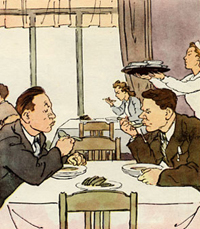 The
total majority of the tourists will find that eating out in Moscow is
quite expensive. It does not have to be that way, it's just that the
options most visible for the foreigner generally are.
The
total majority of the tourists will find that eating out in Moscow is
quite expensive. It does not have to be that way, it's just that the
options most visible for the foreigner generally are.
There are a number of American franchise restaurants, such as McDonald's
and TGI Friday's; it's a familiar, if boring eat at a reasonable price.
A Big Mac in Moscow McDonald's costs 70 Rubles, that is less than in US,
UK and Europe (more
detailedd).
Great American-style breakfasts can be had at either of the American Bar
& Grill locations; also serving thick juicy cheeseburgers.
A huge and quickly growing range of restaurants, with a matching range
of prices, has developed in Moscow. The average cost per person for a
middle to top class restaurant will be $30 to $200 (more if one goes for
vintage wines). A quick 'canteen' style meal in a 'Stolovaya' can cost
about $3 and is generally underground, near famous monuments and subway
stations. These large food courts sometimes also contain a small mall.
They will usually include toilets but be prepared to pay around $1 to
use them. Lately a lot of new "middle-class" restaurants have opened,
filled with families on weekends. The omnipresent McDonald's have
outlets near many metro stations.
Non-chain restaurants and cafes promising "European and Caucasus
cuisine" are equally bad in either one most of the time; seek a
specialist single-region venue instead (Georgian, Russian, Italian,
French etc). ;
Lifetime of an average restaurant or cafe in Moscow is 2 years - in 2
years the quality decreases, or it changes ownership, name and/or
format.
Many small restaurants within the Sadovoye ring are now offering prix-fixe
"business lunches" at around RUB200-250, for the teeming hordes of
white-collars populating the neighborhood during the day. These deals
are valid in the middle of the day (12-3 PM) and include a cup of soup
or an appetizer, the main dish of the day (a smaller portion than if you
order a la carte; sometimes there's even a limited choice), bread (no
Russian eats anything without a slice) and a beverage (soda or
coffee/tea; beer costs extra); it is a reasonably priced, freshly cooked
quick meal in the middle of your wanderings which will tide you through
to the evening.
Ethnic foodd
Georgian – Besides Russian cuisine, one variety of ethnic food
that is strongly recommended while in Moscow is Georgian. This cuisine
is generally spicier than Russian food, and there are a number of
reasonably priced Georgian restaurants in Moscow.
Japanese
Thai cuisine can be found only in few restaurants, and its authenticity
is well arguable. ;
Vietnamese and Chinese cuisines are not popular with Russians,
but can be found if you search for it.
You can find "authentic" Chinese and Vietnamese food in
Vietnamese/Chinese Markets, such as Cherkizovskaya or Izmalovo Markets.
You will need to do some exploring deep into the markets or maybe ask a
few vendors to locate the restaurants. The vendors themselves eat at
those places.
··Viet Cafe
A nice place for Vietnamese food is the "Izumrudnaya Reka" ("Emerald
River") in the Savyolovskiy market, close to Savyolovskaya metro
station.
Outdoor Stand Up
Free-standing street food is well represented with hot dogs/sausages,
meat pastries and doner kebab (shawarma) kiosks (dwindling in numbers,
though, as part of the mayor's quest for limiting immigrant businesses
under the guise of sanitary enforcement). The latter are tasty, if not
entirely authentic, but can be risky; pack Pepto-Bismol. An undertaking
to counter with "native" food under the trade mark of "Russian Bistro" (blini,
piroshki and so on) seems to have flopped, as very few of them remain
(you can still get a taste of the menu on Tverskaya st. near
Pushkinskaya Metro station; in summer be sure to ask for a cold mug of
kvass, a malted rye soft drink, if they have it on tap).
There are also several chains of outdoor stand-up food vendors, usually
located in clusters around Metro stations. A few to look for are:
Kroshka-Kartoshka – These green kiosks sell stuffed (butter, sour cream
or bacon) microwave-baked potatoes, as well as toasted sandwiches and a
few drinks. Hot and filling, but rather expensive for what is basically
just a hunk of root vegetable.
Riksha Ivan ("Ivan the Rickshaw") – Quick Chinese-like cuisine; fried
rice with meat to go.
Teremok – These brown-colored kiosks sell large blinchiki, or Russian
crepes that come with a variety of fillings.
Muscovites are also fond of their ice cream, consumed in any weather,
even (proudly) in the dead of winter, cheap and usually of superior
quality; kiosks can be found all over the center and near all Metro
stations.
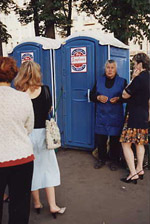
Nevertheless it is cold to pee outdoor in the winter, especially for women. Unlike women in Africa or Asia, the majority of Russian women are not skillful in peeing while standing, and p-mates are not sold in the Russian drugstores. Thus, having to pee out door, they have to bare extensive sites of their bodies. Therefore, they have to urinate in a pod'ezd (ïîäúåçä) – a doorway of a multistoried building. However recently the pod'ezds have been equipped with coded locks, because the pod'ezds always were the very popular places to have a pee in. Thus, one to have to dispose one’s bodily wastes in the winter, dials up a number of any apartment and says to the on-door speakerphone: “I am a post-officer and need to distribute the newspapers among the post-boxes.”
You also can visit to the nearest McDonald’s. However, the Moscow McDonalds' are too large (one of them is the largest McDonald’s in the world), but the restrooms in them are too small for such number of visitors. Therefore you would wait in a long queue. The same queues also occur in the department stores’ restrooms especially in the women’s rooms. The restrooms in the hypermarkets are available for the personnel only.
Fortunately there are 263 stationary restrooms in Moscow. Unlike outhouses, stationary restrooms named Ñîðòèð (from the French verb "sortir", which means "to go out") are separated by sex and many of them are free. Men's public restroom are designated with the letter M, which means ìóæñêîé (men’s), while women's public restrooms are designated with the Russian letter Æ which means æåíñêèé (women’s). Many public restrooms are equipped with squat toilets. However even if they are equipped with standard western pedestal toilets, it should be better for women to urinate in squat or hovering position. Some restrooms are not equipped with toilets and urinals. Instead of them there are holes in a floor and a trench for urine drains.
![]() See
the location of the Moscow free restrooms on the map
See
the location of the Moscow free restrooms on the map


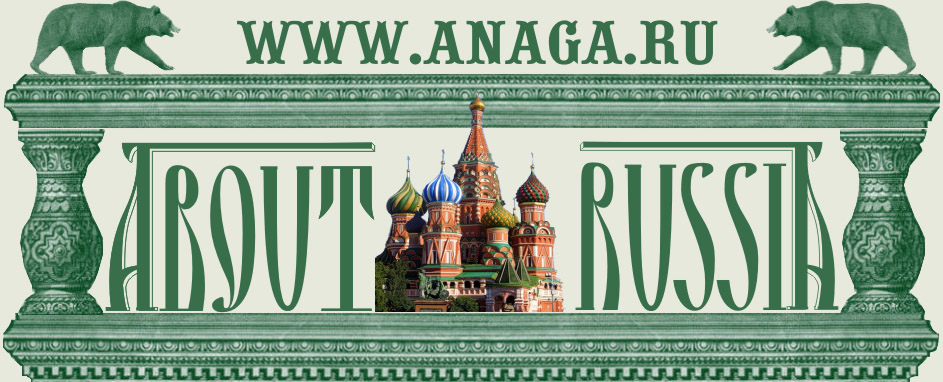


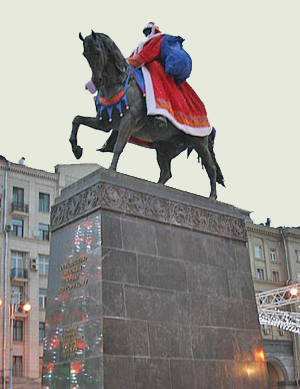
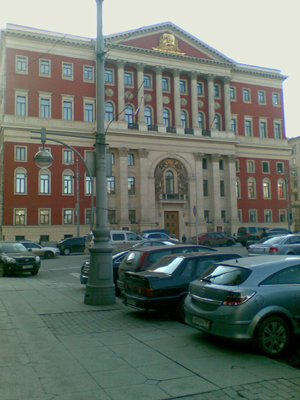
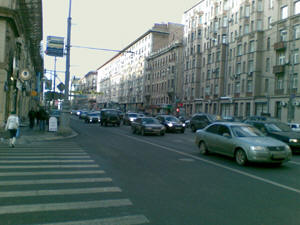
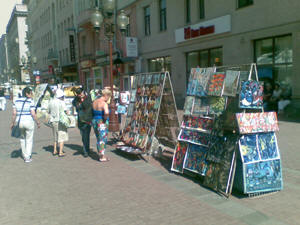
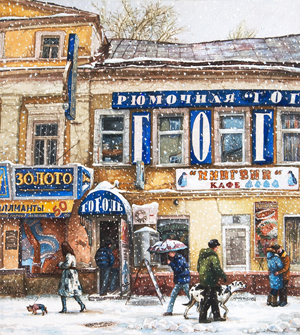
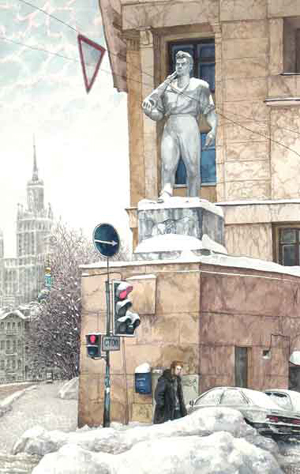

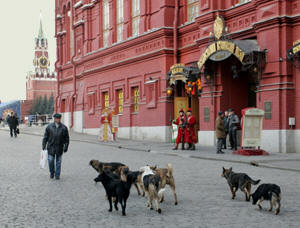
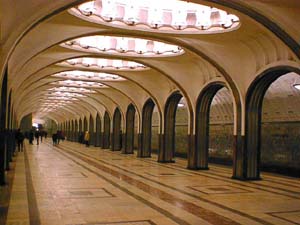
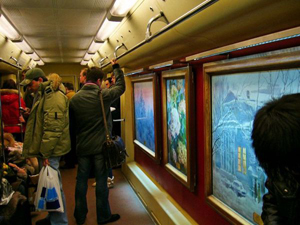
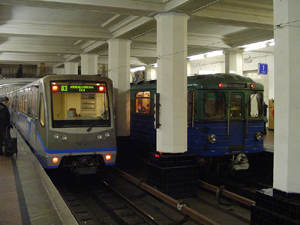
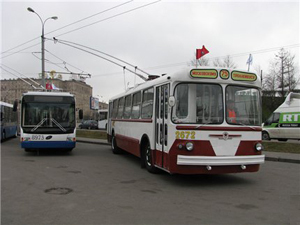
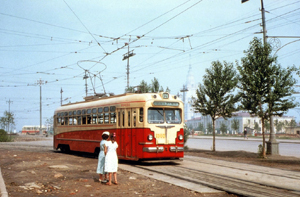
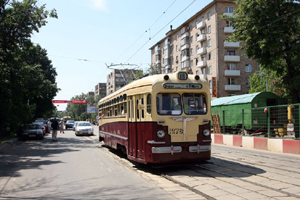
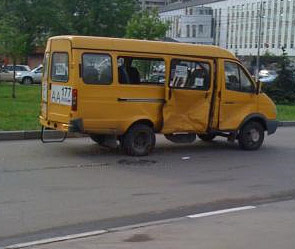
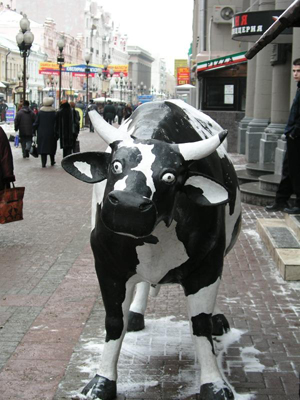
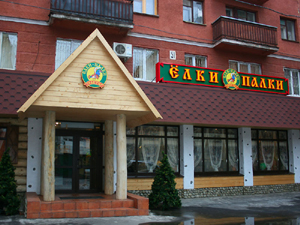
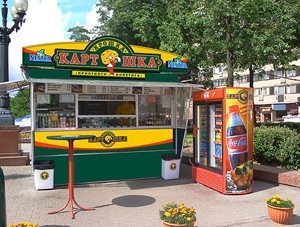
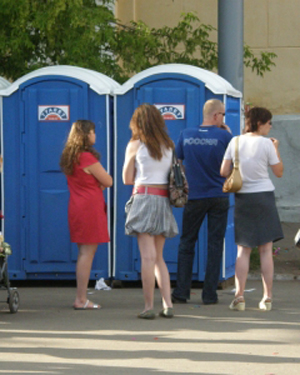
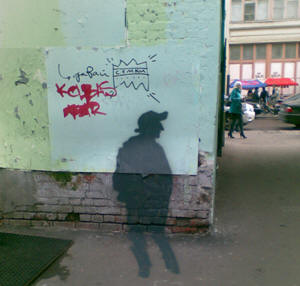

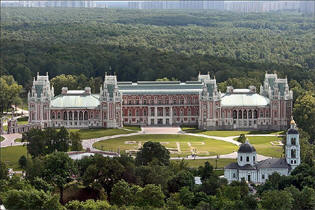
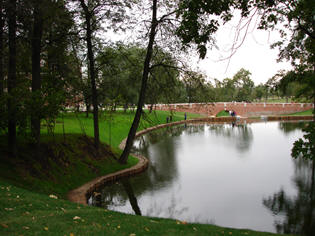
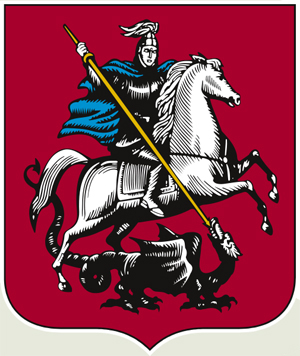 Moscow
is the capital of Russia and the largest Russian city. It is also the
largest metropolitan area in Europe, and ranks among the largest urban
areas in the world. Moscow is a major political, economic, cultural,
religious, financial, educational, and transportation centre of Russia.
It is also the seventh largest city proper in the world.
Moscow
is the capital of Russia and the largest Russian city. It is also the
largest metropolitan area in Europe, and ranks among the largest urban
areas in the world. Moscow is a major political, economic, cultural,
religious, financial, educational, and transportation centre of Russia.
It is also the seventh largest city proper in the world.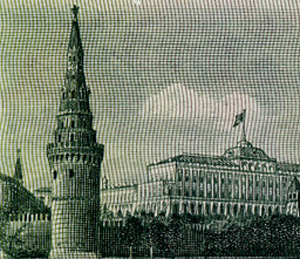 The city and the river were named after the Baltic tribes of Moskvas,
those were similar to the ancient Galindians and to the modern
Lithuanians. The Moskvas were assimilated by the Galindians before the
Russians came, and now just the name let us remember them. Nevertheless,
some historians presume the world Moscow consists of two parts - Mos and
Cow - and meant in Pra-Indoeuropean language simply "a moth of a cow".
Contrary to those scientists, their opponents suppose the word Moscow
means means cow's moss. Actualy the territory of the present city was
covered with mosses, and one of the central streets' name Mokhovaya
means Moss Street.
The city and the river were named after the Baltic tribes of Moskvas,
those were similar to the ancient Galindians and to the modern
Lithuanians. The Moskvas were assimilated by the Galindians before the
Russians came, and now just the name let us remember them. Nevertheless,
some historians presume the world Moscow consists of two parts - Mos and
Cow - and meant in Pra-Indoeuropean language simply "a moth of a cow".
Contrary to those scientists, their opponents suppose the word Moscow
means means cow's moss. Actualy the territory of the present city was
covered with mosses, and one of the central streets' name Mokhovaya
means Moss Street.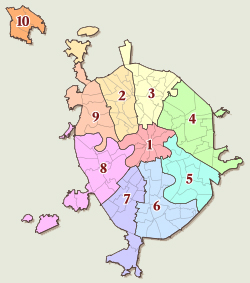
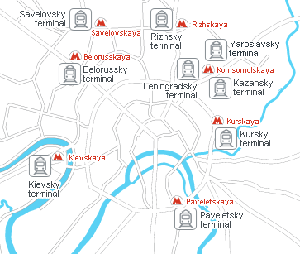 Moscow
lies at the western end of the Trans-Siberian Railway from Beijing,
Ulaanbaatar and Vladivostok. You can reach here from almost anywhere in
Europe and Central Asia. Moscow is also the main railway hub of Russia;
it is often easier for a person going cross-country to change trains in
Moscow, even if it's a little out of the way, as the choice of direct
trains is limited compared to the ones going to the capital. This means,
unfortunately, that main train Rail Terminal s are always crowded with
transients, and are generally about the most unsafe places in the city.
Moscow
lies at the western end of the Trans-Siberian Railway from Beijing,
Ulaanbaatar and Vladivostok. You can reach here from almost anywhere in
Europe and Central Asia. Moscow is also the main railway hub of Russia;
it is often easier for a person going cross-country to change trains in
Moscow, even if it's a little out of the way, as the choice of direct
trains is limited compared to the ones going to the capital. This means,
unfortunately, that main train Rail Terminal s are always crowded with
transients, and are generally about the most unsafe places in the city. 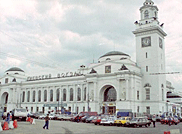
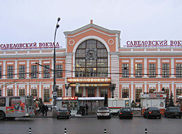
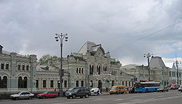
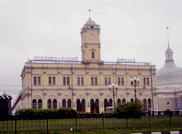
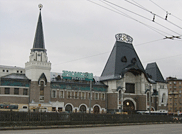
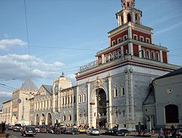
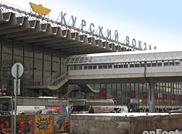
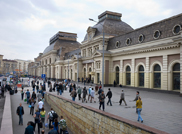
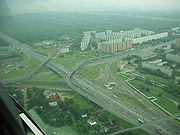 Many
entry points to Moscow - that is, the overpasses carrying the major
highways over the Ring Road and into the city - feature rotating
roadblocks, where teams of traffic police stop all vehicles not
featuring Moscow plates. You will be stopped and questioned; in most,
but not all cases, you'll be allowed to proceed.
Many
entry points to Moscow - that is, the overpasses carrying the major
highways over the Ring Road and into the city - feature rotating
roadblocks, where teams of traffic police stop all vehicles not
featuring Moscow plates. You will be stopped and questioned; in most,
but not all cases, you'll be allowed to proceed. 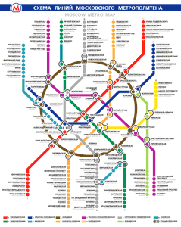
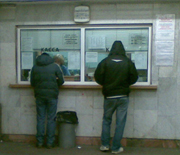

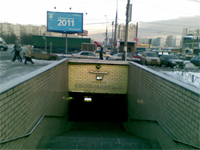 gray line). It's less confusing to refer to the numbers, e.g. line 3 is
line 3 whatever color is on the sign. There are no English signs inside
so have your itinerary ready beforehand or learn to read Cyrillic, which
is possible. Anyway, you can use a Russian-English plan while you moving
inside a Metro train. Don't let yourself be intimidated by the huge
masses of jostling, rushing, cross people. The Russians also take their
time to study the tiny signposts to see where to change trains or which
exit to take. Don't use the metro if you are claustrophobic as the air
is thick especially at rush hour.
gray line). It's less confusing to refer to the numbers, e.g. line 3 is
line 3 whatever color is on the sign. There are no English signs inside
so have your itinerary ready beforehand or learn to read Cyrillic, which
is possible. Anyway, you can use a Russian-English plan while you moving
inside a Metro train. Don't let yourself be intimidated by the huge
masses of jostling, rushing, cross people. The Russians also take their
time to study the tiny signposts to see where to change trains or which
exit to take. Don't use the metro if you are claustrophobic as the air
is thick especially at rush hour.

